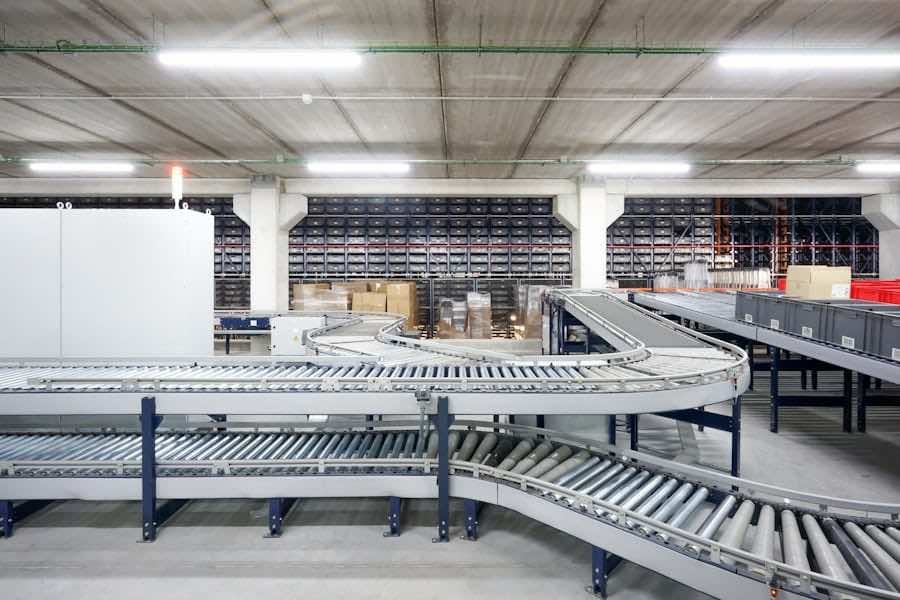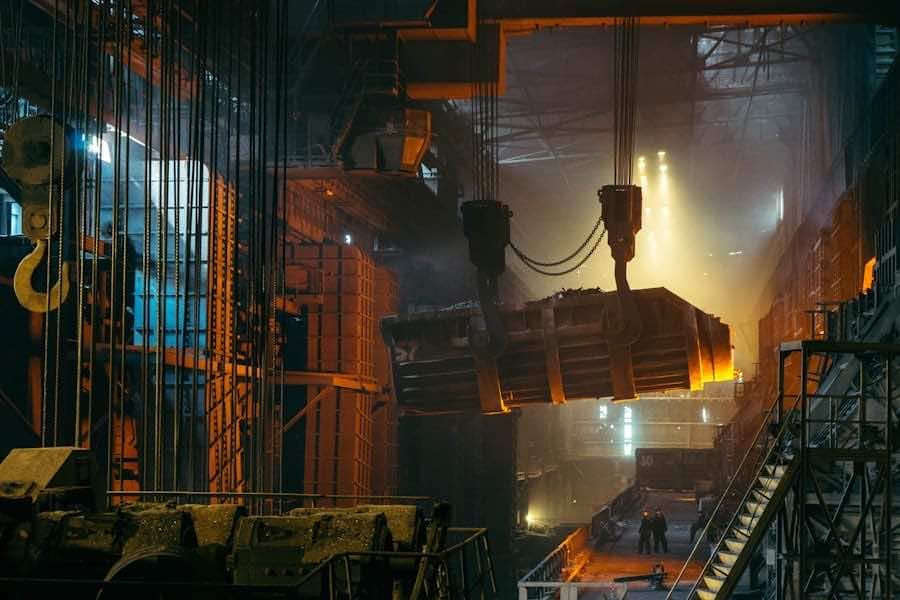The landscape of e-commerce has undergone a seismic shift in recent years, driven by technological advancements and changing consumer expectations. As online shopping continues to gain traction, the demand for efficient and rapid order fulfilment has never been more pressing. In this context, robotic fulfilment has emerged as a transformative force, reshaping how businesses manage their logistics and inventory.
The integration of robotics into e-commerce fulfilment processes not only enhances operational efficiency but also addresses the challenges posed by increasing order volumes and the need for speed in delivery. Robotic fulfilment encompasses a range of automated technologies designed to streamline the picking, packing, and shipping processes within warehouses and distribution centres. From autonomous mobile robots that transport goods to sophisticated robotic arms that handle sorting and packing, these innovations are revolutionising the way e-commerce companies operate.
As businesses strive to meet the expectations of a digitally savvy consumer base, the adoption of robotic solutions is becoming increasingly prevalent, marking a significant evolution in the fulfilment landscape.
Summary
- Robotic fulfilment in e-commerce is revolutionizing the way orders are processed and shipped, leading to increased efficiency and speed in the fulfilment process.
- Robotics play a crucial role in e-commerce fulfilment by automating repetitive tasks such as picking, packing, and sorting, allowing human workers to focus on more complex and value-added activities.
- The advantages of robotic fulfilment in e-commerce include improved accuracy, faster order processing, reduced labour costs, and the ability to handle peak demand periods more effectively.
- However, challenges and limitations of robotic fulfilment in e-commerce include high initial investment costs, the need for regular maintenance and technical support, and potential job displacement for human workers.
- The implementation of robotics in e-commerce fulfilment centres requires careful planning, integration with existing systems, and training for employees to ensure a smooth transition and optimal performance.
The Role of Robotics in E-commerce Fulfilment
Robotics plays a pivotal role in enhancing the efficiency and accuracy of e-commerce fulfilment operations. One of the most notable applications is in the area of order picking, where robots are deployed to navigate through vast warehouse spaces, locate items, and transport them to packing stations. This not only reduces the time taken to fulfil orders but also minimises human error, which can occur during manual picking processes.
For instance, companies like Amazon have implemented Kiva robots, which autonomously move shelves of products to human workers, significantly speeding up the picking process. Moreover, robotics extends beyond just picking; it encompasses various stages of the fulfilment process. Automated sorting systems utilise advanced algorithms and machine learning to categorise and route packages efficiently.
This technology ensures that items are sorted based on their destination, optimising the shipping process and reducing delays. Additionally, robotic arms are increasingly being used for packing tasks, where they can handle delicate items with precision and speed. This multifaceted approach to fulfilment not only enhances productivity but also allows businesses to scale operations in response to fluctuating demand.
Advantages of Robotic Fulfilment in E-commerce

The advantages of robotic fulfilment in e-commerce are manifold, with efficiency and cost-effectiveness being at the forefront. By automating repetitive tasks, businesses can significantly reduce labour costs while reallocating human resources to more strategic roles that require critical thinking and problem-solving skills. For example, a study by McKinsey & Company found that automation could increase productivity by up to 30% in warehouse operations, allowing companies to handle larger volumes of orders without a proportional increase in workforce size.
In addition to cost savings, robotic fulfilment enhances accuracy and reliability. Automated systems are less prone to errors compared to human workers, particularly in high-pressure environments where mistakes can lead to costly returns and dissatisfied customers. The implementation of robotics also allows for real-time inventory tracking, providing businesses with up-to-date information on stock levels and enabling better decision-making regarding restocking and order management.
This level of precision not only improves customer satisfaction but also fosters trust in the brand.
Challenges and Limitations of Robotic Fulfilment in E-commerce
Despite the numerous benefits associated with robotic fulfilment, several challenges and limitations must be addressed for successful implementation. One significant hurdle is the initial investment required for robotics technology. The cost of acquiring and integrating advanced robotic systems can be substantial, particularly for small to medium-sized enterprises (SMEs) that may lack the financial resources to make such investments.
This financial barrier can hinder widespread adoption and create disparities between larger corporations and smaller players in the e-commerce space. Furthermore, there are operational challenges related to the integration of robotics into existing fulfilment processes. Transitioning from a manual to an automated system requires careful planning and training for staff members who will work alongside robots.
There is often resistance to change from employees who may fear job displacement or lack confidence in operating new technologies. Additionally, maintaining and troubleshooting robotic systems can pose challenges, as specialised knowledge is required to ensure optimal performance. These factors can complicate the implementation process and necessitate a strategic approach to change management.
Implementation of Robotics in E-commerce Fulfilment Centers
The successful implementation of robotics in e-commerce fulfilment centres involves several key steps that require careful consideration and planning. First and foremost, businesses must conduct a thorough assessment of their current operations to identify areas where automation can provide the most significant impact. This involves analysing workflows, inventory management practices, and order processing times to pinpoint inefficiencies that robotics could address.
Once potential areas for automation have been identified, companies must select the appropriate robotic solutions tailored to their specific needs. This could range from autonomous mobile robots for transportation tasks to sophisticated robotic arms for packing operations. Collaborating with technology providers who specialise in robotics can facilitate this process, ensuring that businesses choose systems that integrate seamlessly with their existing infrastructure.
Furthermore, training programmes must be established to equip employees with the necessary skills to work alongside robots effectively. This not only enhances operational efficiency but also fosters a culture of innovation within the organisation.
Impact of Robotic Fulfilment on E-commerce Operations

The impact of robotic fulfilment on e-commerce operations is profound, fundamentally altering how businesses approach logistics and customer service. With robots handling repetitive tasks such as picking and packing, human workers can focus on more complex responsibilities that require creativity and critical thinking. This shift not only improves job satisfaction among employees but also enhances overall productivity within fulfilment centres.
Moreover, robotic fulfilment enables e-commerce companies to respond more swiftly to market demands. The ability to scale operations rapidly during peak seasons or promotional events is crucial for maintaining competitiveness in a crowded marketplace. For instance, during Black Friday or Cyber Monday sales, businesses equipped with robotic systems can manage surges in order volume without compromising on speed or accuracy.
This agility not only boosts sales but also strengthens customer loyalty by ensuring timely deliveries.
Future Trends in Robotic Fulfilment for E-commerce
As technology continues to evolve, several trends are emerging that will shape the future of robotic fulfilment in e-commerce. One notable trend is the increasing use of artificial intelligence (AI) in conjunction with robotics. AI algorithms can analyse vast amounts of data to optimise fulfilment processes further, predicting demand patterns and adjusting inventory levels accordingly.
This integration will enable businesses to enhance their operational efficiency while reducing waste. Another trend is the rise of collaborative robots or cobots that work alongside human employees rather than replacing them entirely. These robots are designed to assist workers with physically demanding tasks or repetitive activities, creating a more harmonious working environment where humans and machines complement each other’s strengths.
Additionally, advancements in machine learning will enable robots to adapt to changing conditions within fulfilment centres, improving their ability to navigate complex environments autonomously.
The Future of Robotic Fulfilment in E-commerce
The future of robotic fulfilment in e-commerce is poised for significant growth as businesses increasingly recognise the advantages of automation in enhancing operational efficiency and customer satisfaction. While challenges remain regarding implementation costs and workforce adaptation, the potential benefits far outweigh these obstacles for many organisations. As technology continues to advance, we can expect further innovations that will refine robotic capabilities and expand their applications within the e-commerce sector.
In this rapidly evolving landscape, companies that embrace robotic fulfilment will likely gain a competitive edge by streamlining their operations and responding more effectively to consumer demands. The integration of robotics into e-commerce fulfilment processes represents not just a trend but a fundamental shift towards a more efficient and responsive supply chain model that meets the needs of today’s consumers while preparing for the challenges of tomorrow’s market dynamics.
Robotic fulfilment in e-commerce is revolutionising the way businesses handle their inventory and orders. According to a recent article on how to find the right commercial solicitor for your business, the use of robots in warehouses has significantly increased efficiency and accuracy in fulfilling customer orders. This technology allows companies to streamline their operations and meet the growing demands of online shoppers. By partnering with the right agencies, businesses can stay ahead of the competition and provide a seamless shopping experience for their customers.
FAQs
What is robotic fulfilment in e-commerce?
Robotic fulfilment in e-commerce refers to the use of robots and automation technology to streamline and optimize the process of fulfilling customer orders in the e-commerce industry. This includes tasks such as picking, packing, and shipping products to customers.
How does robotic fulfilment work in e-commerce?
Robotic fulfilment in e-commerce involves the use of robots and automated systems to perform various tasks within a warehouse or fulfilment centre. This can include autonomous mobile robots for picking and transporting items, robotic arms for packing and sorting, and automated conveyor systems for moving products through the facility.
What are the benefits of robotic fulfilment in e-commerce?
Some of the benefits of robotic fulfilment in e-commerce include increased efficiency and accuracy in order fulfilment, reduced labour costs, faster order processing and shipping times, and the ability to handle a higher volume of orders. Additionally, robotic fulfilment can help to minimize errors and improve overall customer satisfaction.
What are some examples of robotic fulfilment technologies used in e-commerce?
Examples of robotic fulfilment technologies used in e-commerce include autonomous mobile robots (AMRs) for picking and transporting items, robotic arms for packing and sorting, automated conveyor systems, and automated guided vehicles (AGVs) for moving products within a warehouse or fulfilment centre.
Is robotic fulfilment widely used in the e-commerce industry?
Yes, robotic fulfilment is becoming increasingly popular in the e-commerce industry as companies seek to improve efficiency and meet the growing demand for online shopping. Many e-commerce businesses are investing in robotic fulfilment technologies to streamline their operations and stay competitive in the market.
